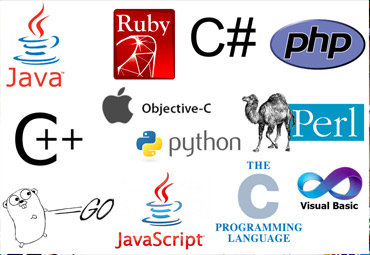
Computer Languages
- C(Programming):-The C Programming Language (sometimes termed K&R, after its authors’ initials) is a computer programming book written by Brian Kernighan and Dennis Ritchie, the latter of whom originally designed and implemented the language, as well as co-designed the Unix operating system with which development of the language was closely intertwined. The book was central to the development and popularization of the C programming language and is still widely read and used today. Because the book was co-authored by the original language designer, and because the first edition of the book served for many years as the de facto standard for the language, the book was regarded by many to be the authoritative reference on C.
- C++:-The C++ Programming Language is a computer programming book first published in October 1985. It was the first book to describe the C++ programming language, written by the language’s creator, BjarneStroustrup. In the absence of an official standard, the book served for several years as the de facto documentation for the evolving C++ language, until the release of the ISO/IEC 14882:1998: Programming Language C++ standard on 1 September 1998. As the standard further evolved with the standardization of language and library extensions and with the publication of technical corrigenda, later editions of the book were updated to incorporate the new changes.
- C#.Net:-C# (pronounced see sharp, like the musical note C♯, but written with the number sign)[b] is a general-purpose, multi-paradigm programming language encompassing strong typing, lexically scoped, imperative, declarative, functional, generic, object-oriented (class-based), and component-oriented programming disciplines.[16] It was developed around 2000 by Microsoft as part of its .NET initiative, and later approved as an international standard by Ecma (ECMA-334) and ISO (ISO/IEC 23270:2018). Mono is the name of the free and open-source project to develop a compiler and runtime for the language. C# is one of the programming languages designed for the Common Language Infrastructure (CLI).
C# was designed by Anders Hejlsberg, and its development team is currently led by MadsTorgersen. The most recent version is 8.0, which was released in 2019 alongside Visual Studio 2019 version 16.3.
- Java:-ava is a general-purpose programming language that is class-based, object-oriented[15] (although not a pure object-oriented language, as it contains primitive types[16][unreliable source?]), and designed to have as few implementation dependencies as possible. It is intended to let application developers write once, run anywhere (WORA),[17] meaning that compiled Java code can run on all platforms that support Java without the need for recompilation.[18] Java applications are typically compiled to bytecode that can run on any Java virtual machine (JVM) regardless of the underlying computer architecture. The syntax of Java is similar to C and C++, but it has fewer low-level facilities than either of them. As of 2019, Java was one of the most popular programming languages in use according to GitHub,[19][20] particularly for client-server web applications, with a reported 9 million developers.[21]
Java was originally developed by James Gosling at Sun Microsystems (which has since been acquired by Oracle) and released in 1995 as a core component of Sun Microsystems’ Java platform. The original and reference implementation Java compilers, virtual machines, and class libraries were originally released by Sun under proprietary licenses. As of May 2007, in compliance with the specifications of the Java Community Process, Sun had relicensed most of its Java technologies under the GNU General Public License. Meanwhile, others have developed alternative implementations of these Sun technologies, such as the GNU Compiler for Java (bytecode compiler), GNU Classpath (standard libraries), and IcedTea-Web (browser plugin for applets).
- HTML:-HTML, CSS:- HTML is the standard markup language for creating Web pages.
HTML stands for Hyper Text Markup Language
HTML describes the structure of a Web page
HTML consists of a series of elements
HTML elements tell the browser how to display the content
HTML elements are represented by tags
HTML tags label pieces of content such as “heading”, “paragraph”, “table”, and so on
Browsers do not display the HTML tags, but use them to render the content of the page